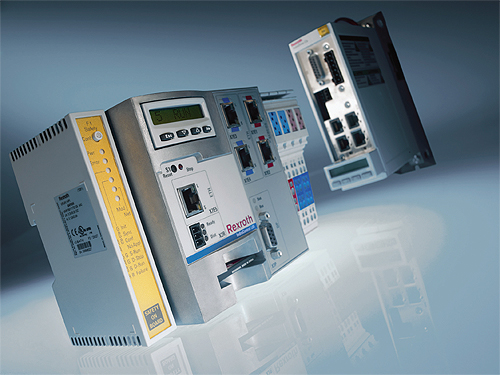by Miles Budimir, Senior Editor for Design World—
Machine tools almost naturally keep pace with advances in motion control, because they’re basically highly precise motion control systems involving accurate and precise positioning.
Advances in networking and computing power of controllers have led to better machine tool performance and added functionality in areas such as safety, distributed control and decentralized intelligent control.
Karl Rapp, applications engineering manager, Machine Tool & Automotive, Bosch Rexroth, describes some of the developments. For instance, from the company’s perspective, “Safe motion integration with CIP Safety on Sercos (CSos) has proven to be quite flexible for distributed and centralized SafeLogic solutions,” he said. “The user can now choose, for each Bosch Rexroth IndraDrive servo drive, up to 16 different safe motion functions selected with the CSos and transferred through the Sercos automation bus between the safety controller and each IndraDrive. This enables distributed safety for fast response and easy validation.”
Another advance comes in the form of distributed hydraulic motion control with the company’s valve-integrated hydraulic axis control on the Sercos real-time automation bus. “The distributed control closes all loops, allows users to switch between position and pressure control, and works with PLCs, motion logic systems and CNCs,” said Rapp. “It allows the use of modern high-axis-count machine tools that rely on the small footprint of highly dynamic hydraulic motion, such as compact rotary transfer machines.”

Advances in computing power for controllers lead to more powerful high-end processor hardware. This in turn enables better performance in many areas, such as PLC code execution, number of CNC channels (stations), interpolator features and Sercos automation bus synchronization, with distributed intelligent drives that are required for the high axis count used in linear or rotary transfer machines for the highest production.
“The distributed intelligence in the Rexroth IndraDrive platform enables the new machine tool cutting solution called “non-circular” turning, which previously required expensive specialty equipment,” said Rapp. He added, “The highly synchronous Sercos automation bus (Ethernet 100 MBps) enables the most deterministic synchronization of drive positioning and CNC path interpolation that brings new performance levels to milling machine tools.”
As for applications that are impacting machine tool designs, Rapp noted that “End-users of parts with short cycle times are contributing to changes in machine tools, with the technique of 5- or 6-sided machining done in one set up, which requires CNC controllers with high channel count (for stations) and axes (electric and hydraulic mixed).”
The precision feedback needs of machine tooling applications are also leading to changes for encoder manufacturers. For example, Bob Setbacken from Heidenhain said, “High performance absolute positioning has been driven by the costs to manufacture more and more sophisticated components and devices. When a machine tool can spend hours on a part, the risk of interruption becomes more likely.” As a result, “absolute encoders on the axes will allow production to resume without flaw,” he said. “For machines with a high number of active axes and elaborate part fixturing, machine-space mapping for crash prevention is also most readily supported by absolute positioning, and in these cases, both linear and rotary feedback will be required. When these machines are calibrated, the need for encoders offering safety will also be demanded, and so an absolute encoder that is certified for safety applications will be preferred over solutions requiring redundancy.”


Leave a Reply
You must be logged in to post a comment.